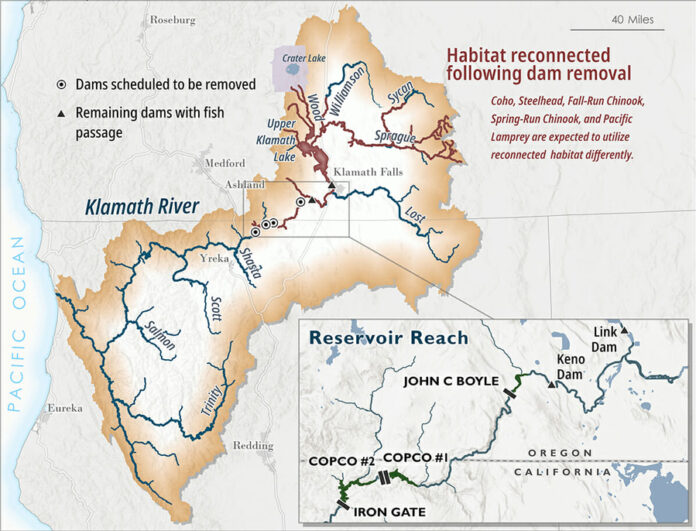Welcome to the latest installment of the Wednesday Wake-Up Call, a roundup of the most pressing conservation issues important to anglers. Working with our friends at Trout Unlimited, Backcountry Hunters & Anglers, the Theodore Roosevelt Conservation Partnership, The Everglades Foundation, Captains for Clean Water, VoteWater.org, and Conservation Hawks (among others), we’ll make sure you’ve got the information you need to understand the issues and form solid opinions.
Above is a great, informative video that shows how South Florida is finally on the path to making Everglades restoration a reality, thsnks to the hard work of a variety of federal and state agencies, advocacy organizations, and other stakeholders.
1. Planning for Salmon and Steelhead to Return as the Klamath Dams Come Down
After decades of determined advocacy, tribes and conservation partners are now on the precipice of removing the four dams of the Klamath River Hydroelectric Project. For over a century, these dams have degraded water quality and blocked salmon, steelhead, and Pacific lamprey from migrating upstream, completely extirpating these native fish from over 400 miles of spawning and rearing habitat in southern Oregon and northern California.
Crews are about to prepare access roads and other infrastructure to receive the extensive equipment required to physically remove the dams. By Halloween, the smallest of the four dams, Copco 2, will be gone. The reservoirs behind JC Boyle, Copco No. 1, and Iron Gate dams will be drained next winter. Those three remaining dams are scheduled for removal starting in summer 2024. Taken together, this work comprises the largest dam removal in history.
While this phase of the project brings a lot of justified excitement, it is also time to prepare in earnest for the return of anadromous fishes upstream of Iron Gate Dam. Wild salmon, steelhead, and lamprey populations are only a small fraction of the size they were prior to dam construction. Removing the dams is the best opportunity to rebuild their numbers. Multiple regional plans are being developed to guide this restoration process.
Click here to read more at tu.org
2. New Lake Okeechobee Management Plan Delayed for Six Months
One of the keys to Everglades restoration is cleaning the water of Lake Okeechobee, so that water can be sent southward. The other benefit of a cleaner lake is that less toxic algae and pollutants will be sent to the St. Lucie and Caloosahatchee estuaries. The Lake Okeechobee System Operating Manual (LOSOM) was the first attempt in over a decade by the U.S. Army Corps of Engineers to revise how Lake Okeechobee’s water is managed.
After years of input and debate, the new LOSOM was supposed to go into effect this coming June, but some regulatory hurdles have now pushed it back another six months. Watch the video above to understand why this is happening and why it could cause real problems in South Florida this year.
Click here to read more on everglades.org
Related stories:
3. Other Notable Stories to Follow
● Defending Access to Navigable Water in California, on backcountryhunters.org
● New Mexico Governor signs bill for $100 million conservation fund, on santafenewmexican.com
● Take action to Build on Recent Commitments to Addressing Drought in the Colorado River Basin on trcp.org
Credit: Source link






























